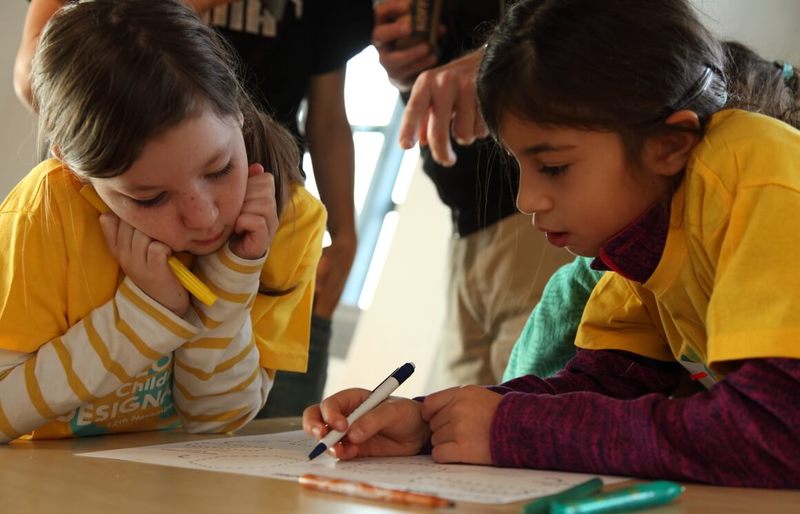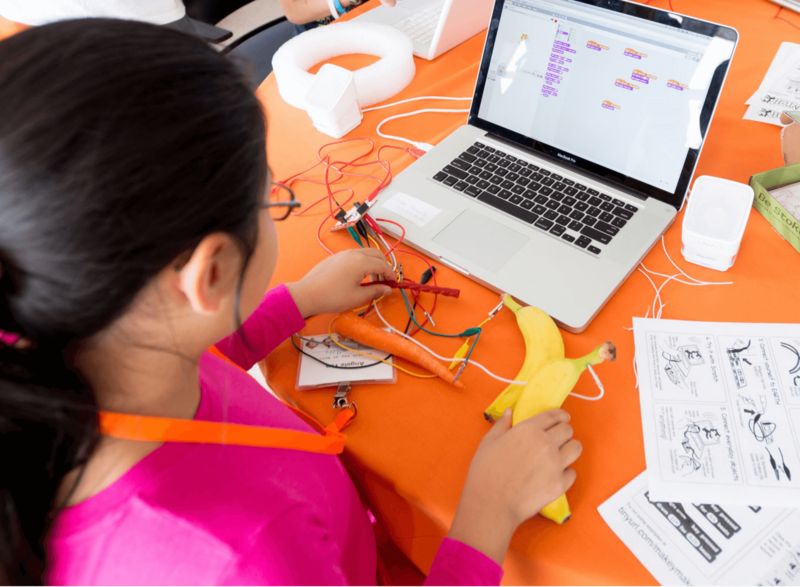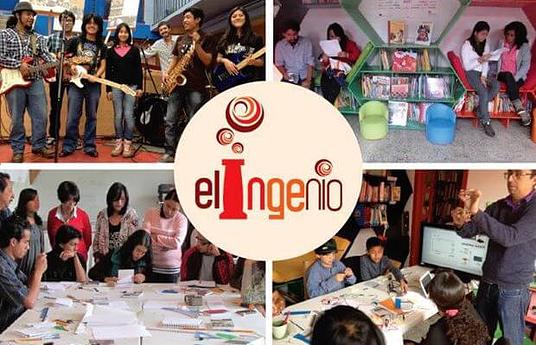After a year of pandemic-induced lockdowns, there couldn't be a better time to celebrate creativity in education. Therefore, in celebration of World Creativity and Innovation Day, we are helping to raise awareness around the role of creativity and innovation in all aspects of human development.
In an age of rapid innovation, technological advances, and ongoing change, children need a diverse set of skills to navigate unpredictable dilemmas and novel opportunities – both in life and in work. That is why creativity skills are essential now more than ever.
The acquisition of knowledge alone is no longer sufficient for them to survive and thrive in this new reality. Creativity not only helps us to navigate through the complexities of our modern world as individuals but also supports our ability to understand and collaborate with others by developing our social-emotional skills. Thus allowing us to live more fulfilling and connected lives. Almost every educator now agrees that we need to consider creativity as a fundamental skill to be cultivated in schools.
The HundrED Spotlight on Creativity, created in partnership with The LEGO Foundation, sought to answer the question: how can we effectively nurture creativity in education?
The results of the report prove there is no shortage of practices and solutions currently being implemented in many parts of the world that are both impactful and scalable. It is our hope to inspire more education systems to adopt creativity as a critical component of students’ learning and development process.
Below you will find 10 guiding principles for fostering creativity in education:
1. Cultural inclusiveness when defining creativity
We all need to ask who gets to decide what creativity is and why. If an education system adopts a definition that does not consider a diversity of cultural perspectives, there is a danger that they may miss important differences about what it means to be creative: for example, the importance of collaboration and co-creation can be neglected. Moreover, some definitions could be biased towards over-valuing particular dimensions over others (divergent thinking and products/outcomes for example).

2. Recognize the importance of intrinsic motivation as being centered around growth mindset, self-efficacy, and a sense of agency
Saku Tuominen, Creative Director at HundrED states that “One of the biggest challenges is that we tend to undervalue and undermine the role of will. Fundamentally everything else is secondary. If there is no will, real motivation, and self-efficacy, nothing meaningful happens creatively”. For example, while the inclusion of creativity at a curriculum level shows a positive shift in mindset at the top-level, it does not mean a lot if concrete changes to include more student voices are integrated into teaching and learning. There are many ways to achieve this, but it could start with having fewer pre-defined answers and outcomes in teacher planning so that students have the space to explore ideas and develop interests and passions.
3. Fostering creativity is everyone's business (not just the arts teacher)
For creativity to become more integrated into school systems, we need to think much broader than the art room. This idea is easier said than done as we should give teachers the time and resources to adopt and adapt modern pedagogies in their area of expertise. However, one practical way to achieve increased participation is to make learning visible through student-led exhibitions of learning from all areas in the school, which could occur throughout the school year.
“There’s a wealth of talent that lies in all of us. All of us, including those who work in schools, must nurture creativity systematically and not kill it unwittingly.” - Sir Ken Robinson
4. Put less emphasis on promoting creativity for career readiness and more in the joy of learning
The push to include creativity in school education is often rationalised through being prepared for the skills needed in the modern workforce. However, we think creativity education should put more emphasis on increasing confidence and the joy of learning for its own sake.
5. Creative partnerships should provide rich learning experiences outside of schools
Creativity in schools is unlikely to reach its full potential if learning primarily occurs within its walls. Partnerships with various opportunities outside of school will be essential to provide a rich array of new learning experiences for children.

6. Social-emotional and creativity skills are linked this connection needs to be considered when fostering creativity
Many approaches to creativity primarily focus on individual skills like divergent thinking. How students cooperate through collaboration, however, is at least as important for both holistic development and how they may apply creativity later in life.
7. We should design teaching and learning that allows for uncertainty in schools
Creativity can and should be integrated into traditional educational programming, but it is unlikely to thrive if teaching and learning are dominated by predefined outcomes with highly scripted and linear learning paths. By designing more activities that allow for uncertain outcomes and learning paths, we can enable students to engage in learning much more creatively.
8. Creative environments need to allow for structured uncertainty, experimentation, risk-taking, and the breaking of conventions safely
Educators need practical solutions that enable environments that allow students to explore these characteristics. Mitchel Resnick offers some guidance here: activities being implemented in an environment need to allow for wide-walls – where a diversity of approaches and outcomes from students needs to be seen for the teaching and task design to be considered successful.

9. We need to tread carefully if we introduce the assessment of creativity
While there are many open questions, issues, and concerns around the assessment of creativity, there are possibilities that research has revealed with interesting results. For example, The Torrance Test for Creative Thinking (TTCT) assesses divergent thinking and other problem-solving skills with the four scales: fluency, flexibility, originality, and elaboration. However, we need the right framing when introducing these measures in order to avoid the possibility of constraining creativity only within these dimensions. At the same time, we need to be careful that student, enthusiasm, motivation, and self-confidence to be creative is not diminished.
10. The training of teachers and leaders will be essential if creativity is to be fostered effectively in schools
The development of learning plans that allow for a diversity of individualised responses from learners is inherently more demanding and resource-hungry than traditional teaching methods of a pre-defined syllabus testing for comprehension, memorisation, and technical skills. Educators primarily need the time and resources to adopt and adapt modern pedagogies that foster creativity in their area of expertise.
Creativity is crucial to solving problems in the future. We believe that every child needs to, and can, develop this skill and mindset, not only to cultivate desirable career attributes (e.g. STEAM, design thinking and entrepreneurship), but also for their holistic development. Teachers also need to develop their creativity if they are to build and manage effective learning environments. And we need ways to develop leadership that creates and supports a vision for creativity at every level of our education system.




